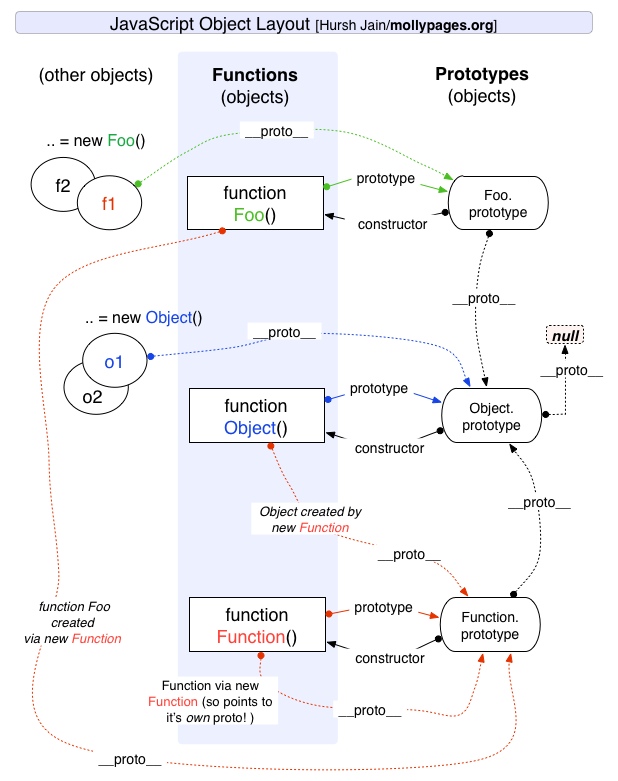All objects automatically read properties in the prototype
chain as-if those properties where defined in the object itself.
Setting the same property via the
object shadows/hides the same property in the
prototype for that instance.
function foo() { }
f1 = new foo();
f2 = new foo();
foo.prototype.x = "hello";
f1.x => "hello"
f2.x => "hello";
f1.x = "goodbye"; //setting f1.x hides foo.prototype.x
f1.x => "goodbye" //hides "hello" for f1 only
f2.x => "hello"
delete f1.x
f1.x => "hello"; //foo.prototype.x is visible again to f1.
Setting the property directly in the
prototype changes it for all instances.
foo.prototype.x = "goodbye";
//now
f1.x => "goodbye"
f2.x => "goodbye";
 /
License & Download /
Tutorials /
Cookbook
/
License & Download /
Tutorials /
Cookbook
 /
Contact & Hire
/
Contact & Hire
 /
License & Download /
Tutorials /
Cookbook
/
License & Download /
Tutorials /
Cookbook
 /
Contact & Hire
/
Contact & Hire

 (external link)
(external link)